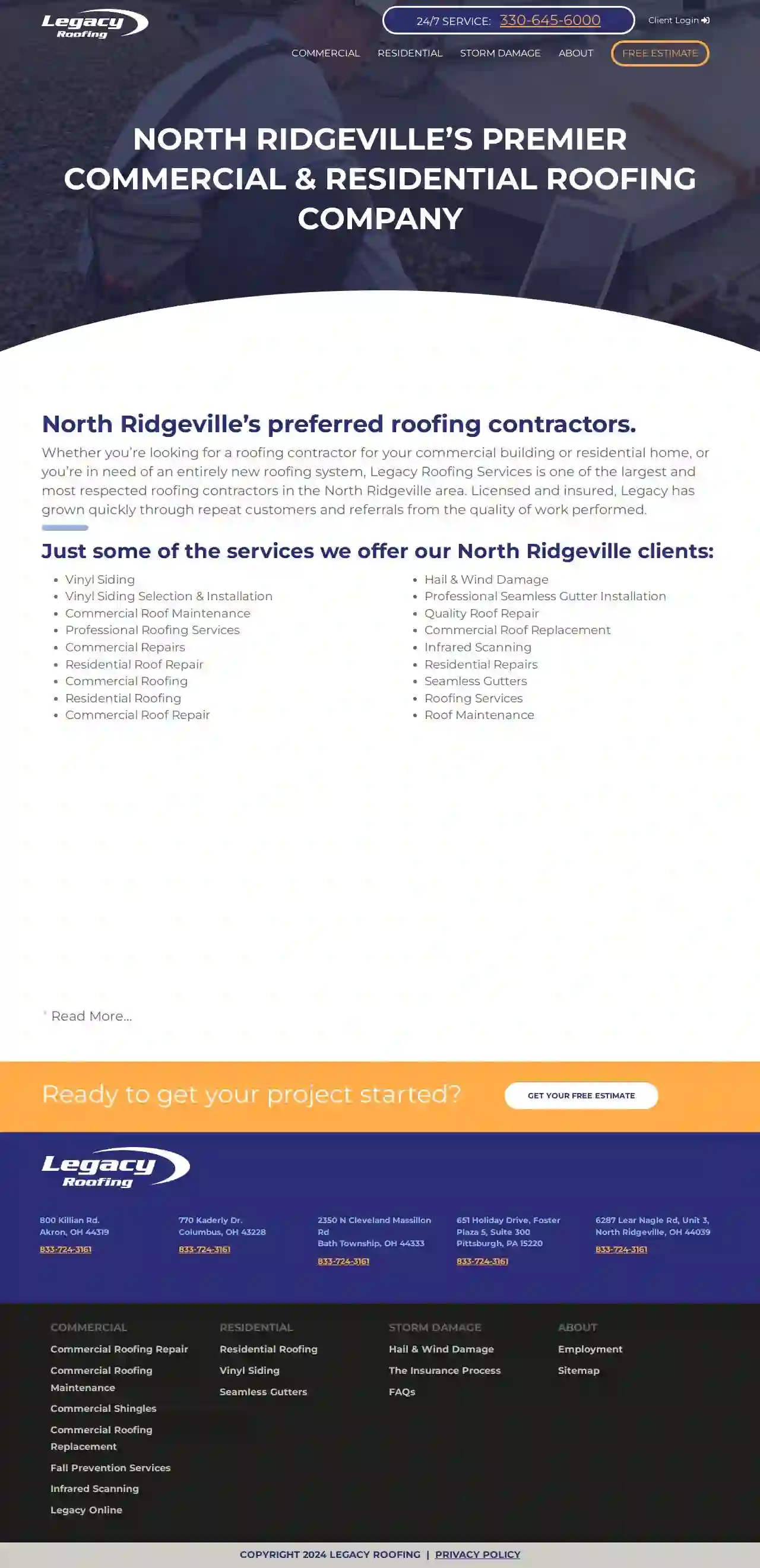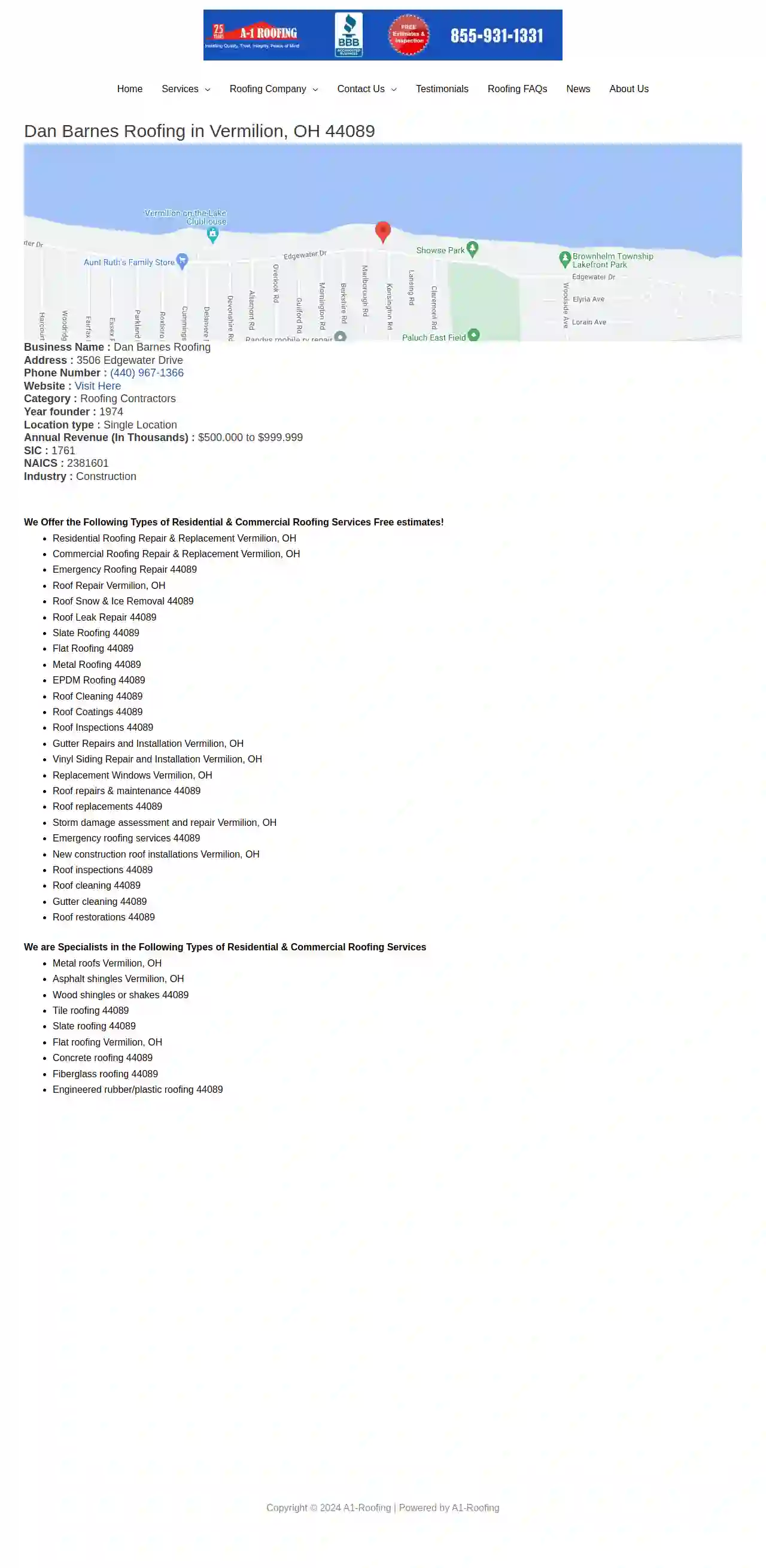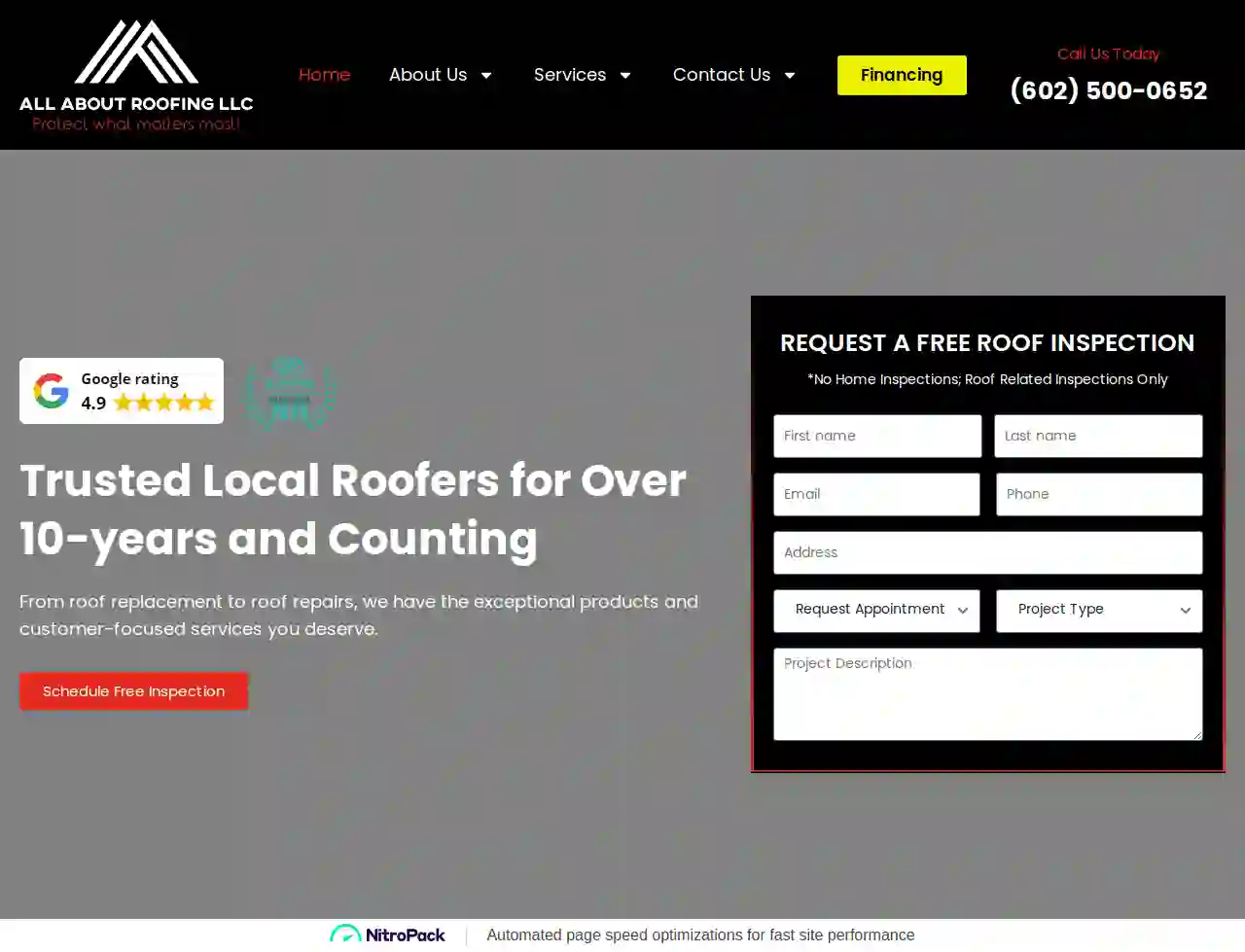Emergency Roof Repair Phoenix
Find top Emergency Roof Repair in Phoenix
Receive 3 FREE Emergency Roof Repair quotes for your project today! Compare profiles, reviews, accreditations, portfolio, etc... and choose the best deal.

Star Roofing
4.536 reviews9201 N 9th Ave, Phoenix, 85021, USStar Roofing Contractor has been providing top-notch roofing in Arizona commercial buildings and Phoenix homes since 1954. We understand that in our hot and dry desert climate, your roof is the first line of defense to keep your home or business cool and that it’s one of the most important investments you can make. We are an approved applicator for most major Commercial roofing systems. As well as any roof replacement or repair is an easy task we can handle. No other Valley roofing company has the experience and expertise to meet our area’s special roofing needs. Although, our main office is located in Phoenix, we cover the state of Arizona. And are also a licensed roofing contractor in the states of Nevada and New Mexico. When you need a new roofer or roofing repair or service of an experienced roofing company call us at 602 944 3323. Let’s show you why we’re “the solver of your roofing problem.” Certified Member of National Roofing Partners since 2001
- Services
- Why Us?
- Accreditations
- Gallery
Get Quote
Legacy Roofing Services North Ridgeville
4.979 reviews800 Killian Rd., Akron, 44319, USLegacy Roofing Services is one of the largest and most respected roofing contractors in the North Ridgeville area. Licensed and insured, Legacy has grown quickly through repeat customers and referrals from the quality of work performed. Whether you're looking for a roofing contractor for your commercial building or residential home, or you're in need of an entirely new roofing system, Legacy Roofing Services is equipped to deal with all kinds of roof installations and repairs. Your brand new roof will be long lasting, energy efficient, sustainable, and will meet your budget.
- Services
- Why Us?
- Testimonials
- Gallery
Get Quote
Southern Arizona Roof Associates, LLC
4.976 reviews3429 E. Kleindale Rd. Suites 101-121, Tucson, 85716, USSouthern Arizona Roof Associates, LLC is a family-owned and operated roofing company with over 40 years of experience. We are dedicated to providing our customers with the highest quality roofing solutions, using only the best materials and techniques. Our team of experts is committed to delivering exceptional service, ensuring that every roof is installed to perfection. We offer a wide range of services, including roof repair, restoration, and replacement, as well as maintenance and inspections. Our goal is to provide our customers with peace of mind, knowing that their roof is secure and protected. We are proud to be a part of the Tucson community and look forward to serving our customers for many years to come.
- Services
- Why Us?
- Accreditations
- Our Team
- Testimonials
- Gallery
Get Quote
Arizona's Finest Roofing
4.522 reviews36480 North Texas Ranger Road, San Tan Valley, 85140, USWelcome to Arizona's Finest Roofing, a family-owned and operated roofing company serving San Tan Valley, Mesa, Phoenix, and Scottsdale, Arizona. We pride ourselves on providing the finest quality roofing materials and services to our customers. Our team is dedicated to ensuring that every roof we install is done right the first time, and we stand behind our work with a best price guarantee. We offer a wide range of roofing services, including roof repair, maintenance, and upgrades. Our team is experienced and knowledgeable, and we use only the finest quality materials to ensure that your roof is secure and long-lasting. Contact us today to schedule a free estimate and let us help you protect your home with a quality roof.
- Services
- Why Us?
- Accreditations
- Our Team
- Testimonials
- Gallery
Get Quote
Dan Barnes Roofing
44 reviews3506 Edgewater Drive, Vermilion, 44089, USA-1 Roofing, has built its high reputation as a leading Dallas Roofing company based upon quality workmanship, using best roofing materials, and customer service. A-1 Roofing specializes in residential and commercial roofing services. We are a locally owned company with over 25 years experience as roofing contractors. We serve the roofing needs of the Dallas metro area, with additional offices in Austin and Houston. We provide your home or business with superb workmanship, and we can handle any roofing projects in Texas.
- Services
- Why Us?
- Gallery
Get Quote
All About Roofing LLC
4.9451 reviews13260 W. Foxfire Dr Suite 10, Sun City West, 85378, US- Services
- Why Us?
- Accreditations
- Gallery
Get Quote
Northline Roofing LLC
4.443 reviews1027 Spire Dr., Prescott, 86303, USLooking for a reputable roofing company in Prescott, AZ? Stop searching, because you've just arrived at the right place at the right time! Northline Roofing LLC serves the residential and commercial roofing needs of Prescott, Prescott Valley, Chino Valley, and beyond. Whether you're looking for recovery assistance to a home or business roof affected by natural disasters (wind, rain, snow, or hail) or you need a roof installation for a new building, we've got you covered. No matter the type of material, be it asphalt shingles, slate, wood, metal, and more; we're the roofing company you can always rely on. Our roofers have more than 20 years of experience in the roofing industry and are always ready to walk you through every step of the process. From obtaining quotes to helping with insurance claims, we are always by your side walking you through the process. For years, we've enjoyed working with our customers and they've given us great positive feedback by giving us a perfect 5-star rating on Google! We're an insured company that is committed to providing guaranteed products and services in town. With over 20 years of experience in the trade, we know all the workmanship of providing the best roofing to our customers. We're striving to provide professional support and expertise in both the products we use and the services we offer. Give us a call today at 928-227-7788 to find out what your roof repair cost, roof replacement cost, or new installation will be.
- Services
- Why Us?
- Our Team
- Testimonials
- Gallery
Get Quote
A1 Roofing Solutions
4.946 reviews2450 W Broadway Rd Suite 108, Mesa, 85202, USA1 Roofing Solutions is a local roofing expert providing exceptional solutions for clients. We use the highest quality materials and methods to complete your project quickly and correctly. Our people are the difference, with 25+ years of experience in the industry. We offer a wide range of roofing services, including shingle, tile, foam/coating, flat roofs, and metal shingle. We also provide solar roofing solutions to harness sustainable energy and reduce your carbon footprint. Our company is licensed, bonded, and insured, and we stand behind our work with robust warranties.
- Services
- Why Us?
- Gallery
Get Quote
AZ Roofing Works
4.397 reviews123 Main St, Phoenix, 85016, USAZ Roofing Works is a locally-owned roofing company that specializes in providing top-quality roofing services to homeowners, real estate professionals, and light commercial building owners across the Greater Phoenix Valley. With over 50 years of industry expertise, our team of expert roofers promises to provide exceptional service and products to suit all of your residential and light commercial roofing needs. We offer a wide range of roofing services, including tile roof repair and replacement, shingle roof repair and replacement, foam/flat roof repair and replacement, and solar removal and reinstall. Our team is standing by, ready to help you with all of your roofing needs. Call (602) 283-3383 or request a free estimate today!
- Services
- Why Us?
- Accreditations
- Our Team
- Testimonials
- Gallery
Get Quote
A+ Roofing, LLC
2.911 reviews1722 Butternut Rd, Williston, 05495, USYour Local Roofing Experts Fully Insured | Family Owned | 30 Years of Experience William, the owner of A+ Roofing, has over 30 years of experience in the roofing industry. It is our top priority to provide the best possible customer service to all our customers from initial consultation to project completion and even after. We are committed to providing top quality work at an affordable price. Our service includes installation of residential and commercial roofing along with roofing repair services. We are also available in the winter to clear roofs after heavy snow falls to eliminate ice/snow back ups while during the spring, summer & fall – you can depend on us for lawn mowing and brush hogging. We provide year round services and can be reached every day with emergency service even on weekends & holidays. All roof replacements carry a workmanship warranty along with a manufacturer’s warranty from the shingle manufacturer. We stand behind our work. William or another team member would be happy to discuss your roofing project with you. Give us a call and we can come to your home or business. We will assess the work that needs to be completed and discuss your options. Estimates are always free.
- Services
- Why Us?
- Accreditations
- Our Team
- Testimonials
- Gallery
Get Quote
Over 17,196+ Roofing Businesses registered
Our roofing experts operate in Phoenix & surroundings!
Roofyng.com has curated and vetted the Best Roofers in and around Phoenix. Find a top & trustworthy business today.
Emergency Roof Repair FAQs
- Check the Attic: Inspect your attic for signs of water damage, such as damp insulation, water stains, or mold growth. Follow the trail of water damage to try and locate the point of entry.
- Inspect the Roof: Examine the roof for missing or damaged shingles, flashing issues, or any visible gaps or cracks that could allow water to penetrate.
- Check Gutters and Downspouts: Ensure gutters and downspouts are clear and functioning correctly, as clogged gutters can lead to water backup and leaks.
- Professional Inspection: If you're unable to find the leak source, contact a reputable roofing contractor for a professional inspection. They have the expertise and tools to identify hidden leaks and determine the best course of action.
- Apply Roofing Cement: If the leak is due to a small crack or hole in a shingle, apply roofing cement to seal the gap. Roofing cement is a waterproof sealant that can provide a temporary fix.
- Use Sealant Tape: Sealant tape is a waterproof tape that can be applied over cracks or gaps in flashing or other roof components. It provides a temporary barrier against water intrusion.
- Install a Tarp: Cover the affected area with a heavy-duty tarp, secured with nails or weights, to create a temporary waterproof barrier. Ensure the tarp extends beyond the leak area to effectively direct water away.
- Divert Water: If the leak is near a gutter or downspout, you might be able to temporarily divert water away from the leak point by adjusting the gutter or using a temporary extension.
- Active leaks: Water dripping into your home during or immediately after a storm.
- Missing or damaged shingles: Large sections of missing shingles, or shingles that are cracked, broken, or curled.
- Damage to flashing: Flashing that is torn, lifted, or missing around chimneys, vents, or skylights.
- Sagging or uneven rooflines: This could indicate structural damage that needs immediate attention.
- Debris on the roof: Fallen tree branches, power lines, or other debris on the roof can cause damage and should be removed as soon as possible.
What should I do if I suspect a roof leak but can't find the source?
What are some temporary measures I can take to stop a roof leak?
How do I know if I need emergency roof repair after a storm?
Can I temporarily fix a roof leak myself?
What should I do if I suspect a roof leak but can't find the source?
- Check the Attic: Inspect your attic for signs of water damage, such as damp insulation, water stains, or mold growth. Follow the trail of water damage to try and locate the point of entry.
- Inspect the Roof: Examine the roof for missing or damaged shingles, flashing issues, or any visible gaps or cracks that could allow water to penetrate.
- Check Gutters and Downspouts: Ensure gutters and downspouts are clear and functioning correctly, as clogged gutters can lead to water backup and leaks.
- Professional Inspection: If you're unable to find the leak source, contact a reputable roofing contractor for a professional inspection. They have the expertise and tools to identify hidden leaks and determine the best course of action.
What are some temporary measures I can take to stop a roof leak?
- Apply Roofing Cement: If the leak is due to a small crack or hole in a shingle, apply roofing cement to seal the gap. Roofing cement is a waterproof sealant that can provide a temporary fix.
- Use Sealant Tape: Sealant tape is a waterproof tape that can be applied over cracks or gaps in flashing or other roof components. It provides a temporary barrier against water intrusion.
- Install a Tarp: Cover the affected area with a heavy-duty tarp, secured with nails or weights, to create a temporary waterproof barrier. Ensure the tarp extends beyond the leak area to effectively direct water away.
- Divert Water: If the leak is near a gutter or downspout, you might be able to temporarily divert water away from the leak point by adjusting the gutter or using a temporary extension.
How do I know if I need emergency roof repair after a storm?
- Active leaks: Water dripping into your home during or immediately after a storm.
- Missing or damaged shingles: Large sections of missing shingles, or shingles that are cracked, broken, or curled.
- Damage to flashing: Flashing that is torn, lifted, or missing around chimneys, vents, or skylights.
- Sagging or uneven rooflines: This could indicate structural damage that needs immediate attention.
- Debris on the roof: Fallen tree branches, power lines, or other debris on the roof can cause damage and should be removed as soon as possible.